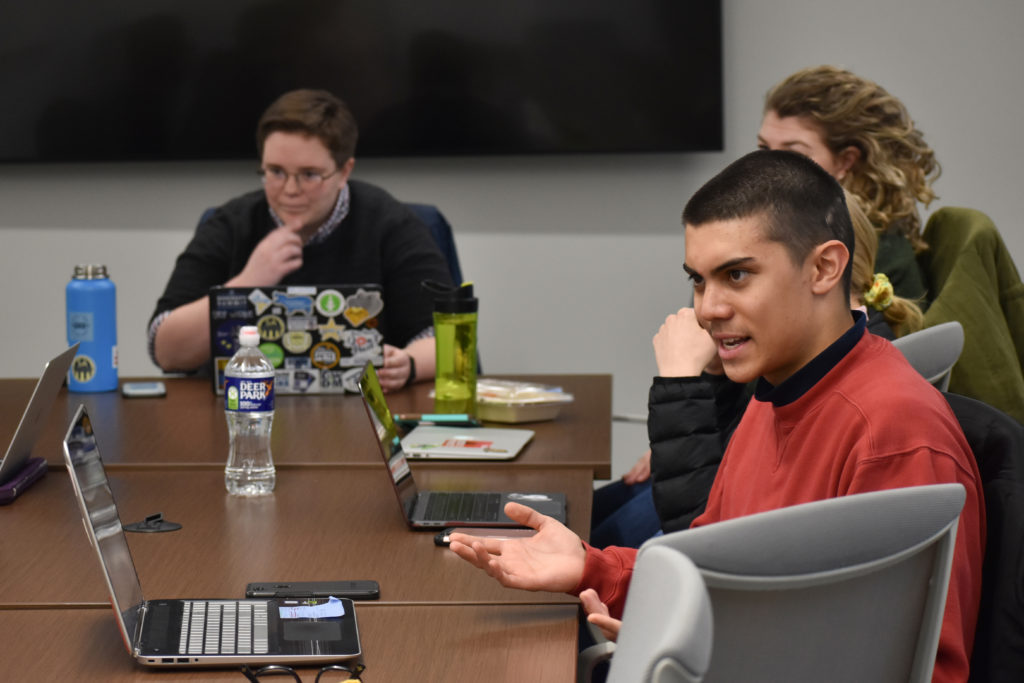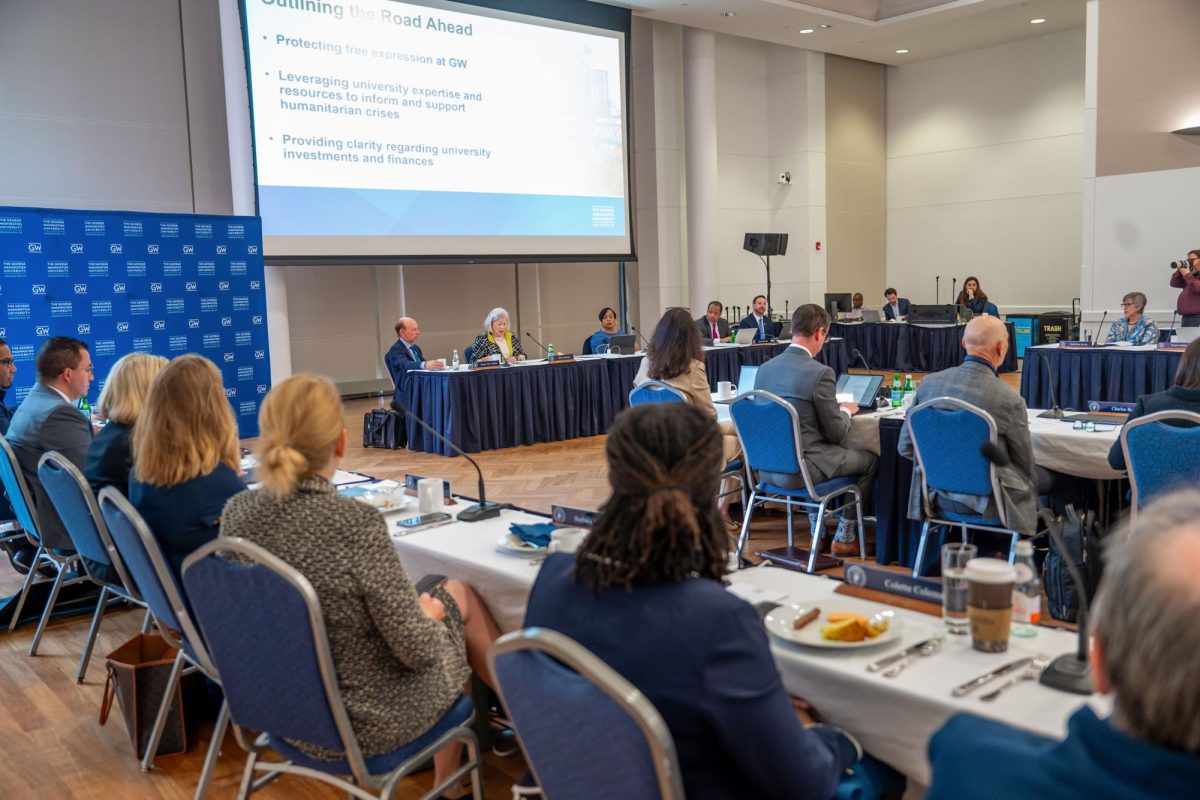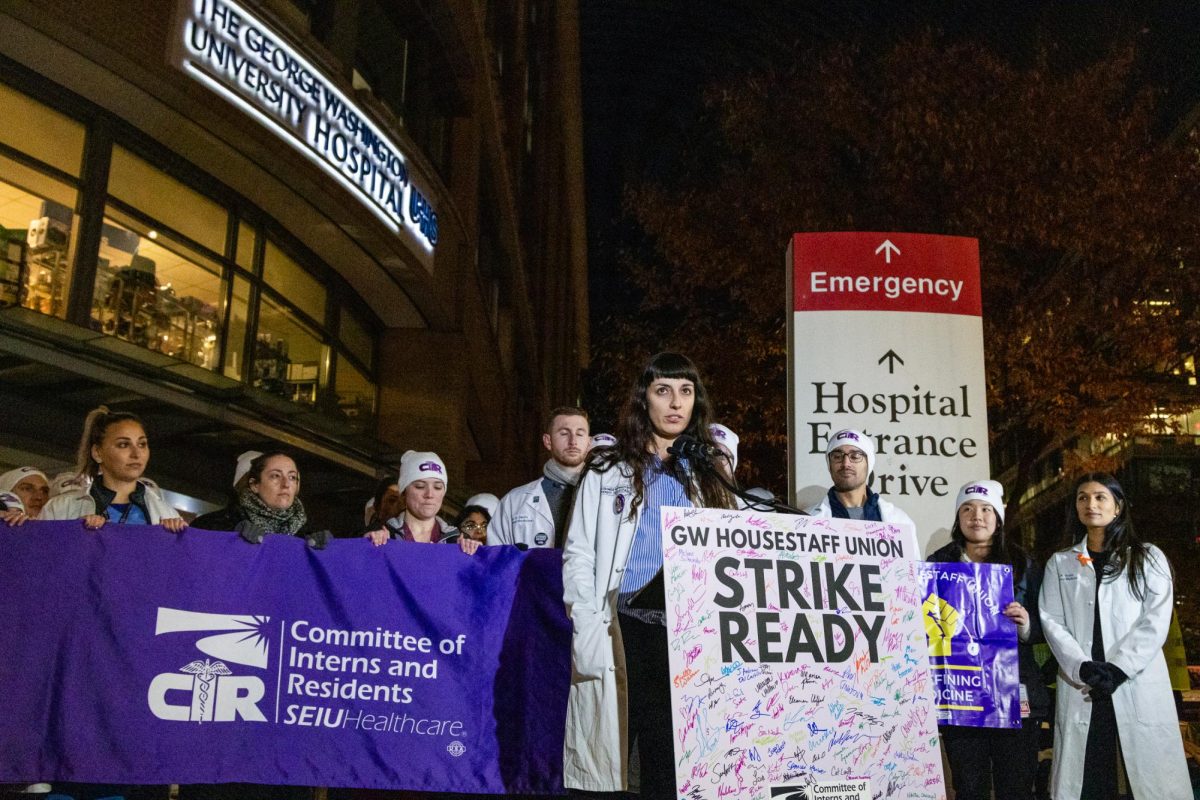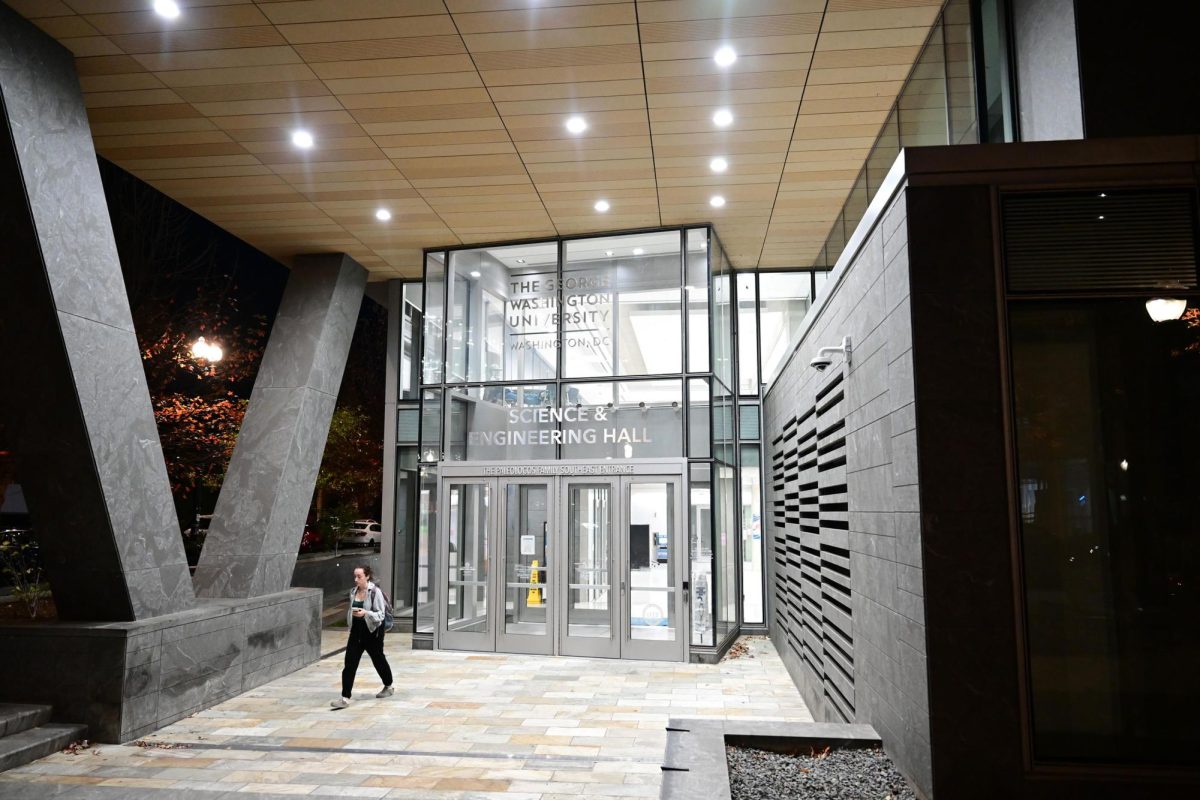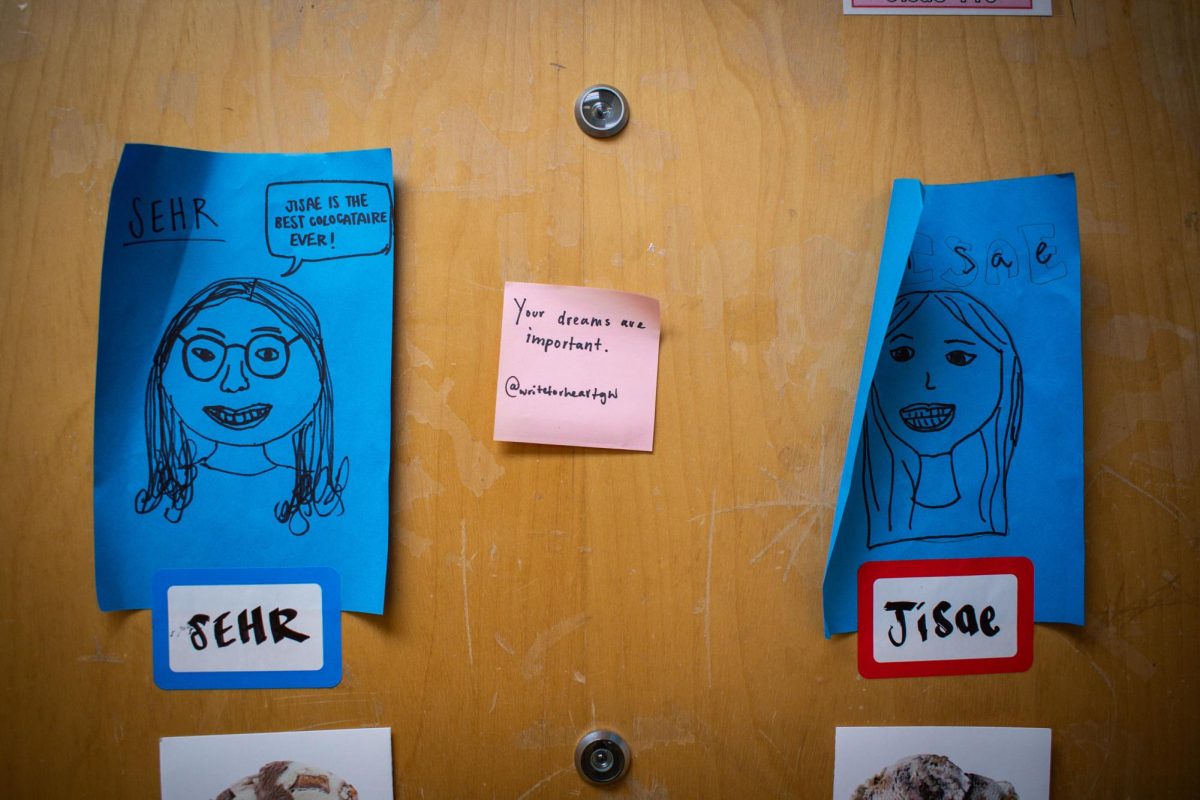Student leaders said a report detailing long-term goals for undergraduate education uses “vague” language and overlooks “important” concepts of humanities and sustainability.
A faculty-led committee released a report late last month outlining principles to help officials execute the University’s next strategic plan, which emphasizes research, world-class faculty, and graduate and undergraduate education. Student Association leaders said the goals leave out plans to address issues of sustainability and diversity and threaten GW’s strengths in the humanities by shifting academic focus toward STEM.
“What it has continuously looked like is some kind of rubber stamp on President LeBlanc’s vision for this University rather than a collaborative process where other students, faculty members, alumni and staff get to weigh in and shape the way that this University will look,” said Yannik Omictin, the Student Association’s vice president for government relations.
The report lists seven goals, like expanding STEM opportunities and attracting a more diverse undergraduate student body. Omictin said STEM students feel “unheard” in their field because their curriculum is limited to a setlist of courses and students can’t branch out into other areas of study.
The report includes goals to decrease the student-adviser ratio and implement “pop-up” courses and “discovery tracks” to provide students with broader curriculum choices. Omictin said the “incongruent” section on pop-up courses doesn’t detail the resources required to make the courses possible, like hiring more faculty.
The Columbian College of Arts and Sciences updated advising programs last January to include one-on-one advising for students, and student leaders pushed last semester to implement a first-year experience course that helps students navigate the District and budget.
“It seems to me like someone had the idea in a committee session or outside a committee session, like, ‘Woah, this could be cool,’ and they just stuck it in the report,” he said.
Omictin added that officials did not include tangible proposals to address diversity, only including “buzz words” often associated with diversity and inclusion. The proposed plan to cut enrollment may reduce racial diversity on campus, according to models presented by the Office of the Provost and obtained by The Hatchet.
“What I care about is the content of it,” Omictin said. “It was so vague, this, ‘The University will promote diversity and inclusion.’ Well, we’ve been saying that for the last however many years.”
He said the University must invest in improving space for the Multicultural Student Services Center and evaluating changes for the Colonials nickname and the Marvin Center. Just more than half of voting students supported ditching the Colonials moniker last semester, and student leaders have pushed to rename the Marvin Center, named after a former University president who supported segregation, for several years.
The report states that the University should enroll more first-generation students and involve faculty and staff in more diversity trainings. But Hannah Edwards, the SA’s vice president for diversity and inclusion, said officials can take more “concrete” actions to improve campus inclusivity by offering need-based scholarships for low-income students, increasing GWorld funds and enrolling more students from “historically marginalized backgrounds.”
GWorld dollars increased for the third time last semester, and admissions officers partnered with four elite universities to travel abroad to encourage students from other countries to attend GW in fall 2017.
“This administration, like any, does not wish to be held accountable if they fail to implement these measures,” Edwards said in an email.
The report also outlines goals to allow students to earn joint STEM degrees, implement a STEM honors program, improve pre-med and pre-health programs and better link GW’s location to STEM fields.
SA Vice President for Sustainability Jan Nowak said the University’s plan to increase its STEM presence would detract from the University’s “strong” studies, like international affairs, if officials re-allocated resources to STEM programs.
“To completely change GW’s focus from international affairs, politics and [political communication], the things that we do really well at GW and are known for right now, and to try to shift that focus completely I think is misguided,” he said.
Nowak said increased activism, like the protest last week during which students marched outside the F Street House, demonstrates students’ ongoing push to strive for a more sustainable University. The SA Senate urged officials to divest from fossil fuels, and Sunrise GW held protests last week pushing for the same cause.
“Sunrise protests and movements that are going on right now are a pretty clear sign that a lot of students do really care about sustainability,” Nowak said. “If the administration takes note of that, which I hope they do, they’ll hopefully understand that this is something that they should incorporate now into the plan.”
Nowak said officials won’t incorporate sustainability into projects under the University’s five-year plan if they don’t treat the subject as a core value now. Sustainability is not currently mentioned in the undergraduate report.
“If they’re looking to build this Thurston Hall with courage instead of sustainability, I don’t know what that even means,” Nowak said. “It’s just really integral to all of the processes that go on at GW to make student life better.”


